One of the big astronomical events this month is an annular eclipse. The moon will pass in front of the sun for observers in much of the Pacific and South America. Along the path of annularity, which starts a little north of Christmas Island or Kiritimati, crosses Easter Island or Rapa Nui, and then moves across the southern part of South America, a bright ring of the sun’s disk will make a silhouette of the moon. No part of this eclipse may be viewed safely without filters made specifically for viewing the sun or a means of projecting an image of the sun, so watch carefully. This event will be on October 2 Universal Time. It will be the last central solar eclipse until February 17, 2026.

The moon crosses the equator going south the day of the eclipse. It’s also at apogree 406,500 kilometers away. That great distance is why the moon’s disk doesn’t appear large enough to cover all of the sun’s disk. Besides the conjunction with the sun, the moon’s also in conjunction with a star and a planet around the time of the eclipse. We won’t get to see the moon close to Mercury on the 2nd. Mercury itself is in superior conjunction (on the other side of the sun) on the 1st. And then the moon occults Spica on the 3rd in a daytime event. Well, much of the fun in astronomy is knowing what’s happening, even if we can’t see it.
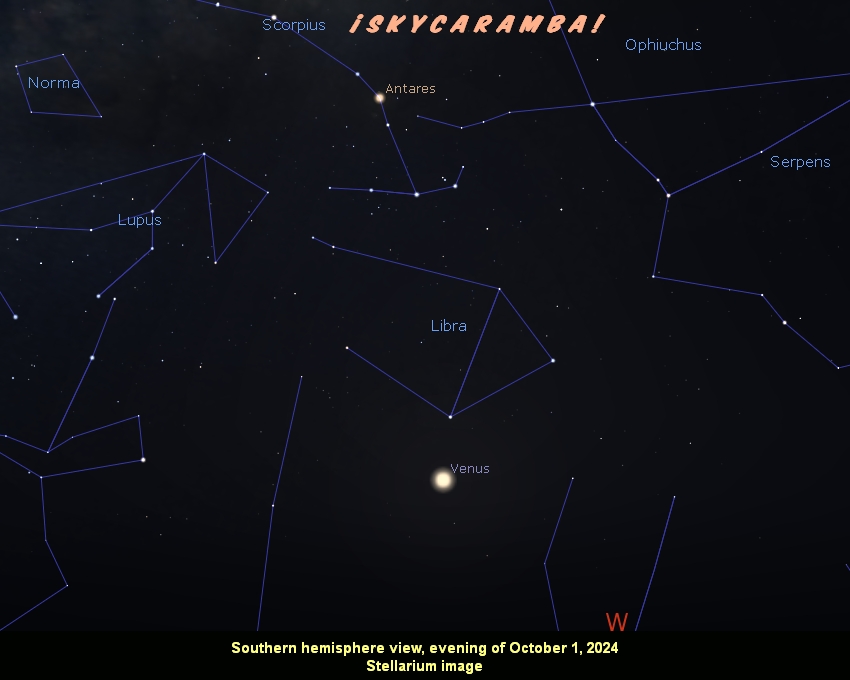
See a thin crescent moon in the evening sky close to Venus on the 5th. Some viewers will see the moon occult Antares on the 7th. You’ll need to be in a South Atlantic location to see the star suddenly disappear as the moon approaches. Southern lunistice happens on the 9th at 28.7°. If you haven’t seen these extreme lunar declinations yet, you need to see them this month or very soon. The moon’s monthly extremes will wane back to about 18° over the next nine years and then take another nine to work their way back up to the current values.
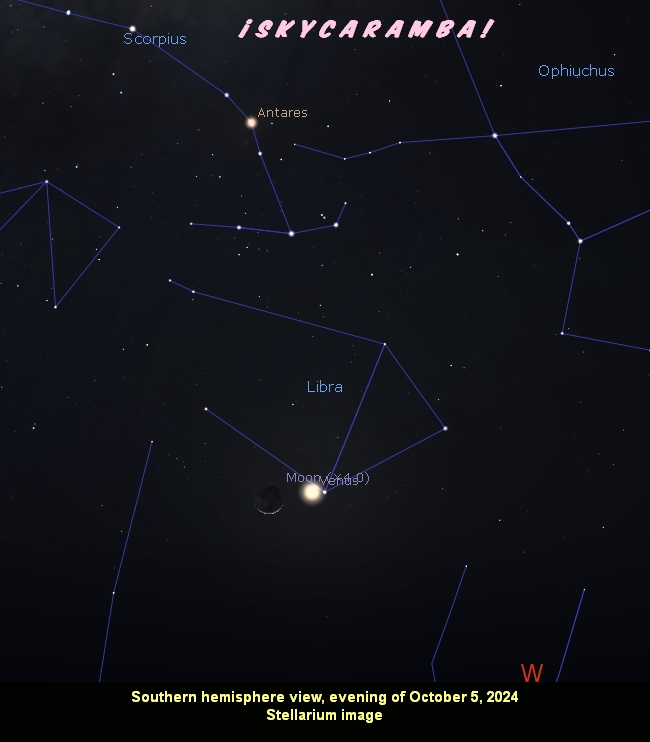
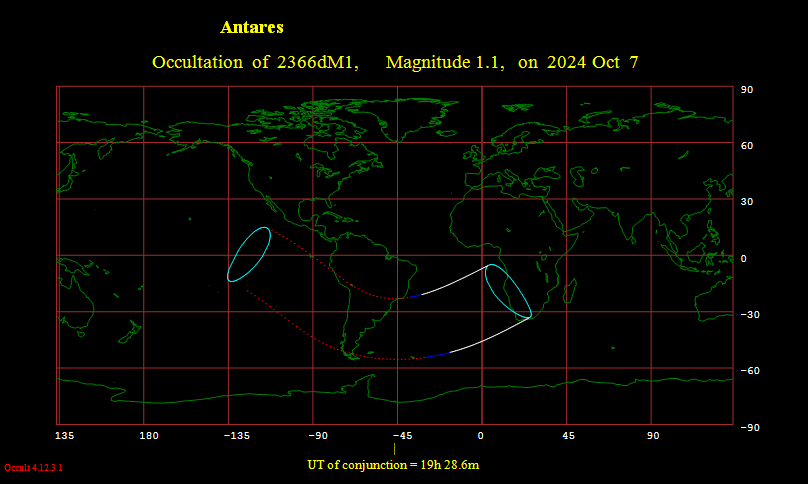
A first quarter moon is near Spica in Virgo on the 10th. A few nights later, a waxing gibbous moon passes in front of Saturn. That occultation is on the 14th UT and is visible from eastern Africa, part of the Indian Ocean, and southern Asia. On the 15th, the moon appears near Neptune and crosses the equator northward. Full moon happens with a perigee of 357,200 kilometers on the same day on the 17th. The moon passes close to the earth’s shadow, but no part of the moon passes through it this month. So we don’t have a lunar eclipse.
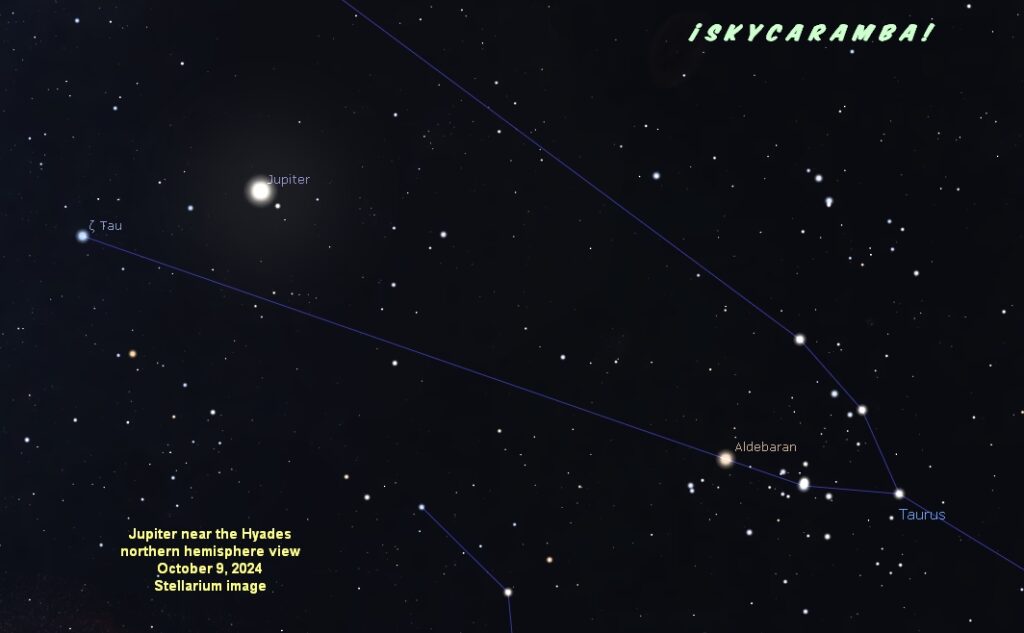
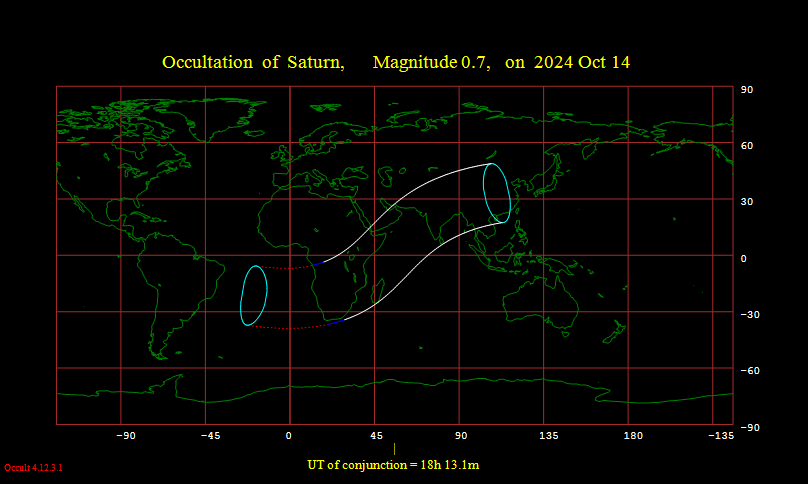
The moon passes near Uranus on the 19th and then the Pleiades the same day. See the waning gibbous lunar disk near Jupiter on the 21st. Then northern lunistice at 28.7° happens on the 22nd. Here’s another lunar declination extreme to see while you can. After passing near Pollux in Gemini and Mars on the 23rd, the moon’s at last quarter on the 24th. The moon’s near Regulus on the 26th. On the 29th, it has another apogee, this time 406,200 kilometers away. On the same day, it goes south across the equator again. If you can spot Spica, you’ll see the moon near it on the morning of the 31st. That’s one day before new moon.
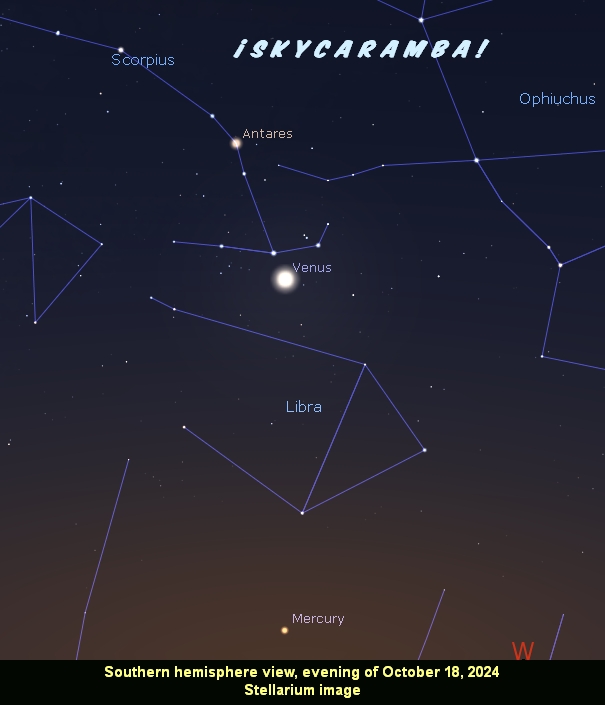
After going through superior conjunction on the 1st, Mercury becomes an evening object. Before you can spot it, you can see evening object Venus work its way through Libra. That will take about the first half of the month. Then Venus passes through Scorpius and southern hemisphere sky watchers can start looking for Mercury below it as the messenger planet reaches Libra. Venus appears close to Antares on the 26th. In the last days of October, Venus is in the southern reaches of Ophiuchus.

Saturn is partway up the eastern sky at sunset. The ringed planet continues slow retrograde motion in Aquarius this month. Meanwhile, Uranus is approaching opposition. That will be next month. But for now, it’s already up for most of the night. Spot it with binoculars a little south of the Pleiades, moving retrograde.
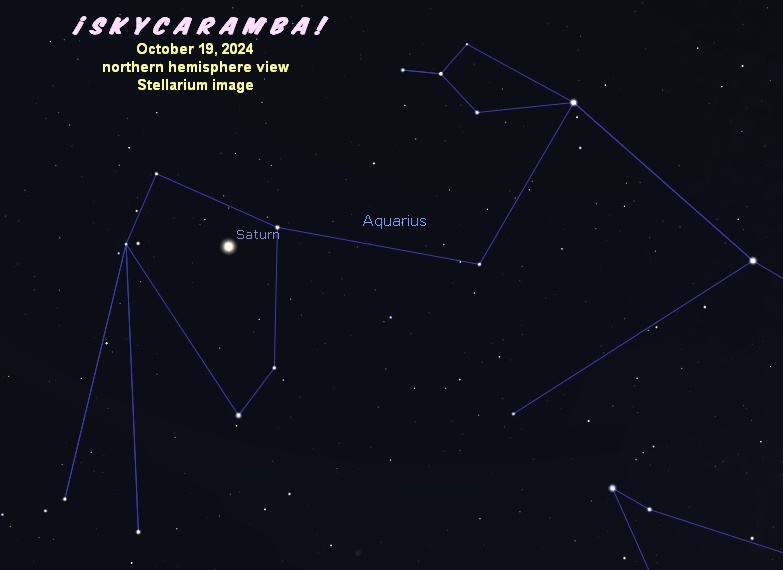
Jupiter appears stationary for the first half of this month. It begins retrograde motion on the 9th a bit west of the Hyades. Observe carefully and you can see it moving back toward the asterism later in the month. The planet rises early to mid evening.
Late evening riser Mars starts the month in the middle of Gemini. After passing close to Wasat around the 9th, the red planet continues eastward and crosses into the boundary with Cancer just a few days before October ends. Having Castor, Pollux, and Procyon nearby should make a very appealing sight.



